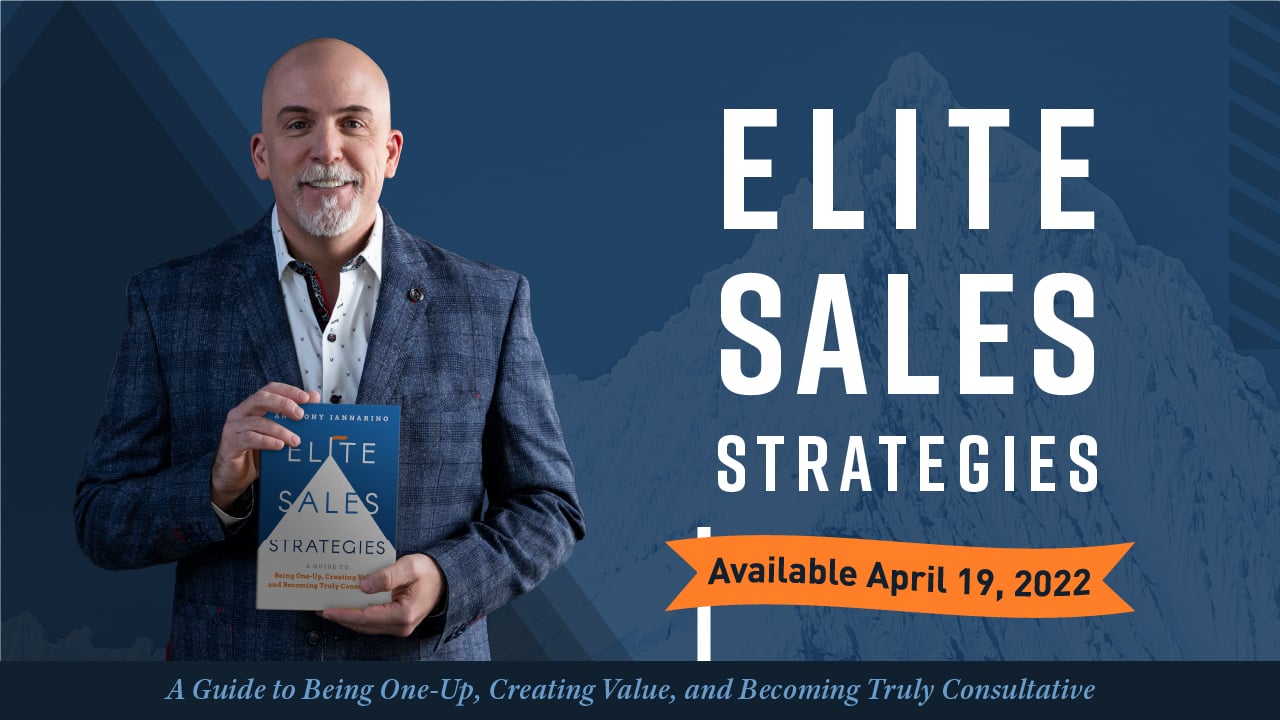Having certain client conversations in a particular sequence can improve your ability to help clients change. It can be difficult to create opportunities and compel change without understanding how to organize your sales conversations.
One reason to start with a data-driven approach rich in insights and perspective is that it allows you to create a context lock. Here is a simple example of context lock: Your client has used the same process the same way for so long that it prevents them from producing what they sell. They’ve likely been eclipsed by competitors who have already invested in new technologies. The senior leader doesn't want to change because it requires time, money, and retraining their workforce.
The salesperson starts the conversation by sharing that 12 companies have entered the industry, taking advantage of the client’s lack of innovation. In less than two years, they've grabbed a little more than 35% of the current market and their new innovations have resulted in a demand that has grown by more than 50%.
This hypothetical context lock is a bit crude. It lacks a fuller account of the data one would need to make it a lock, even if it is enough to illustrate the concept. Once the senior leader hears the truth of their situation, it is difficult to ignore the facts and forces that explain his poor results and why the company is losing market share. However, in this context lock, there is an opportunity.
The Need for a Context Lock
Most of the time when salespeople engage with their clients the conversation is one devoid of context. The salesperson seeks a problem and pain, believing that will create an opportunity and win the client's business. And on occasion, it works well enough.
The salesperson who is One-Up will recognize the certainty sequence from Elite Sales Strategies: A Guide to Being One-Up, Creating Value, and Becoming Truly Consultative. In early conversations, One-Down salespeople try to create certainty that they will get positive results. This gets the sequence of sales conversations exactly backward, and it creates a certainty of negative consequences, as that is what causes the client to recognize the need to change. Only after you've established the need to change can you begin a conversation about ensuring positive outcomes.
Without a context lock, you allow the client to have a conversation without their having to confront the full reality of their situation and their role in the poor results. A conversation before you have established this context doesn't create the same value for the client because they haven't learned what they need to understand the decisions they are facing. Ignoring context lock allows the client to accept a suboptimal fix.
A Clinical Consultation and Context Locking
The truly consultative salesperson will have an approach that is somewhat clinical. It doesn’t indict decision-makers for their negligence or the willful stubbornness that has caused them to flounder over time. Instead, the consultative salesperson shares the context in a way that explains something the client hasn't fully recognized.
As you watch a prospective client engage with the data that explains their plight, you can often see the contacts start to recognize the true nature of their challenges. You might also see contacts look at each other as this is the first time they recognize their beliefs are at odds with reality. You might also have a contact who is incredulous of the data, insights, or your perspective. Someone might tell you, “That can’t be right.”
Context Locking and the Changing Nature of the Discovery Call
If pressed to describe the nature of the discovery in the modern sales approach, I would describe it as a paradigm shift, a sharp break from the past and a step into the future. A paradigm shift is not easily created by asking clients about their problems and their pain. Instead, it's the result of helping the client recognize their reality and learning something about themselves.
Most salespeople have an incomplete view of discovery, believing it is a stage for them to learn what they need to help the client. What this gets wrong is that the client needs to learn as much or more than the salesperson in the first conversation. Without updating the client’s assumptions, beliefs, and preferences, a paradigm shift isn't possible. And without the paradigm shift, your client is likely to carry on in the way they were before you found them.
The First-Meeting Problem
When salespeople struggle to create credibility, it is because they are trying to leverage their company, their existing clients, and their solutions, none of which moves the needle. By starting with the context the client needs, the salesperson explains what's going on outside the client's windows and why it matters, skipping the legacy approaches that create negative value (i.e., wasted time).
A salesperson must prove they can close the gaps for their prospective client by establishing themselves as One-Up. This shows that they know more than their client about the decision they are making. Without doing this, a salesperson isn't going to have an easy time converting a first meeting to a second meeting. A question about the client’s problem cannot provide the context and an understanding of what drives the client to change.
The New Strategies of B2B Sales
When a conversation doesn't create enough value for the client and also fails to help the salesperson with the outcomes they need, it is outdated. The modern sales approach requires new strategies that achieve value creation for the client while allowing the salesperson to move the conversation forward in some meaningful way. These strategies provide the differentiation that creates a strong preference to engage with—and eventually buy from—the salesperson and their company.
You can find the blueprint for some of these approaches in Elite Sales Strategies: A Guide to Being One-Up, Creating Value, and Becoming Truly Consultative.









.jpg?width=768&height=994&name=salescall-planner-ebook-v3-1-cover%20(1).jpg)


